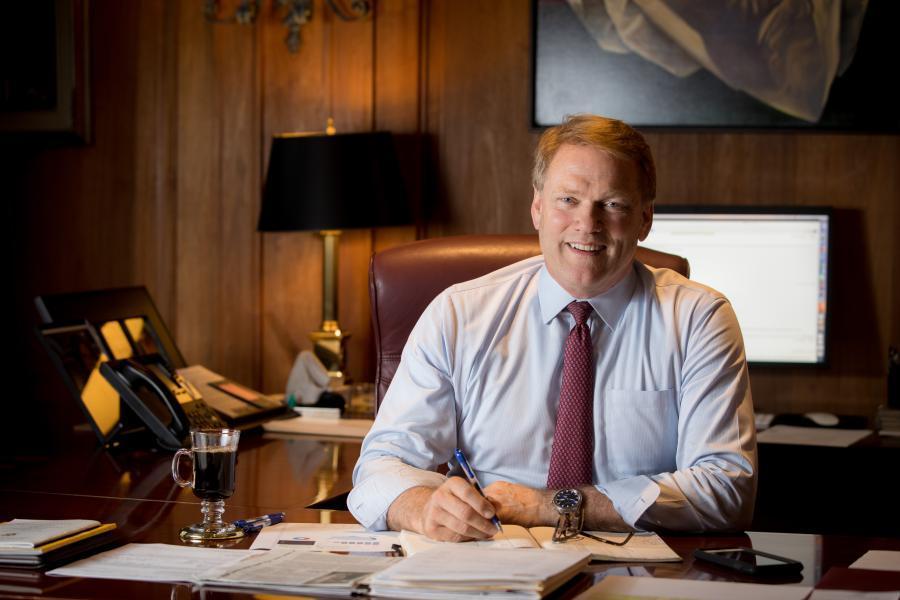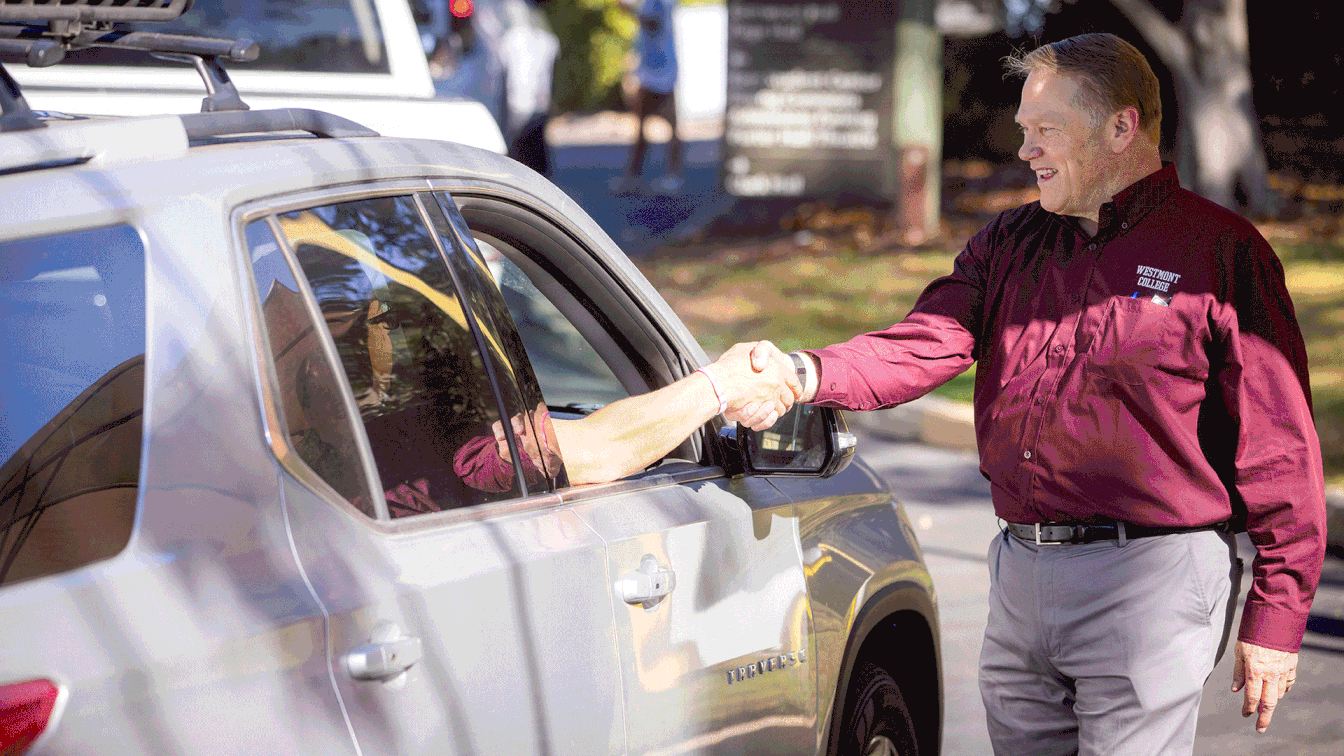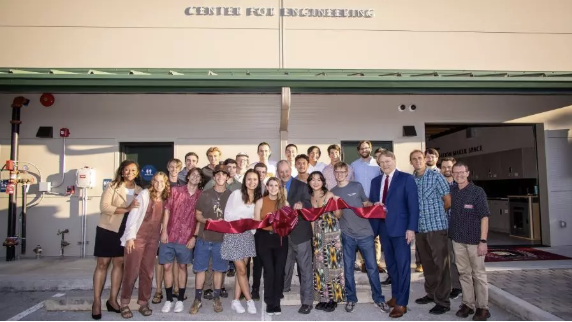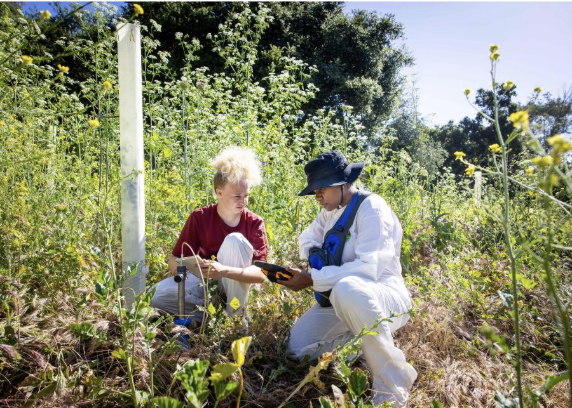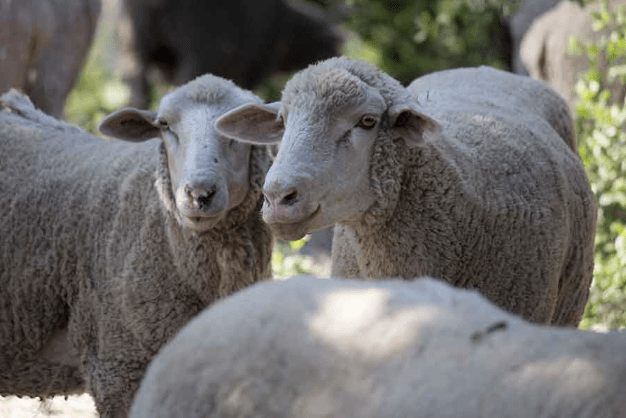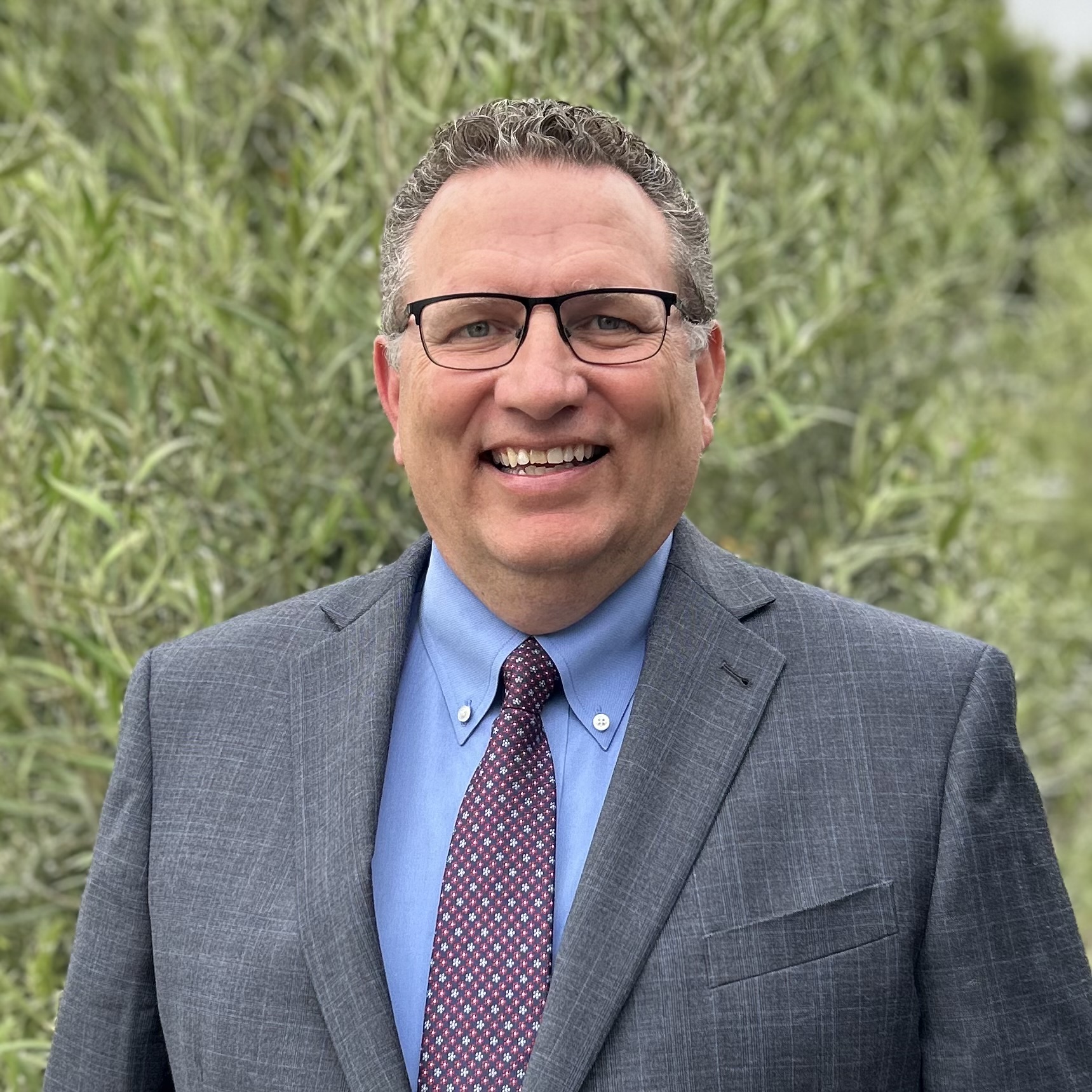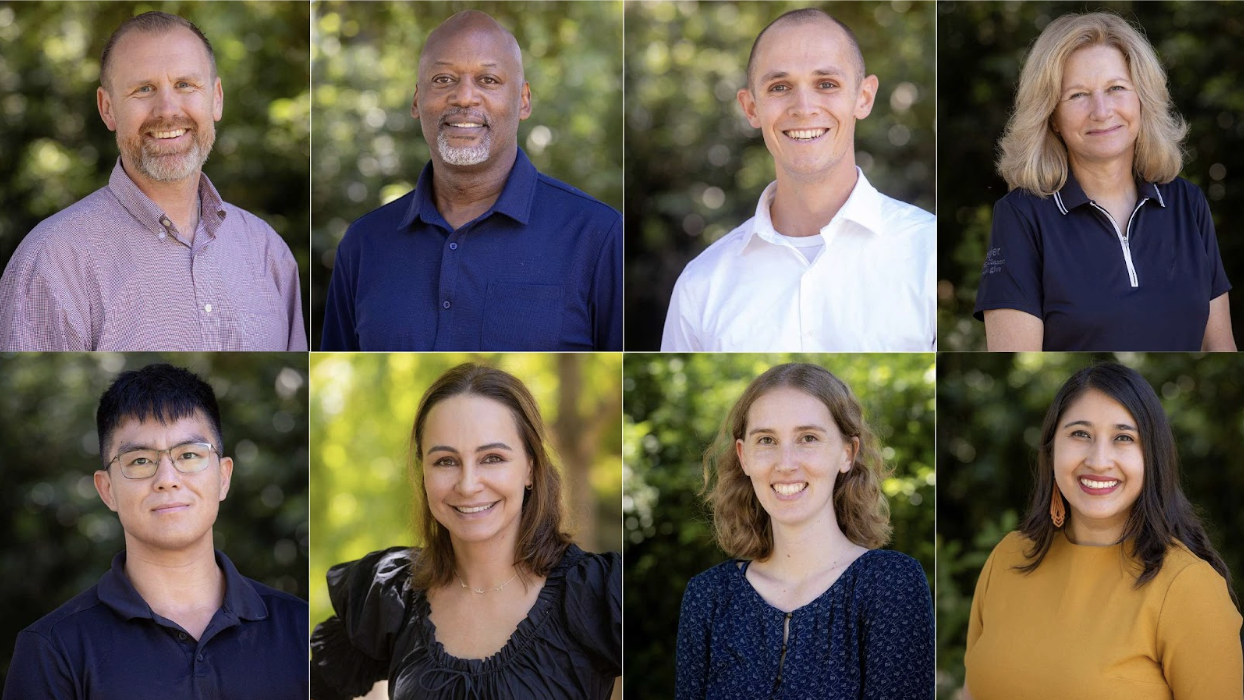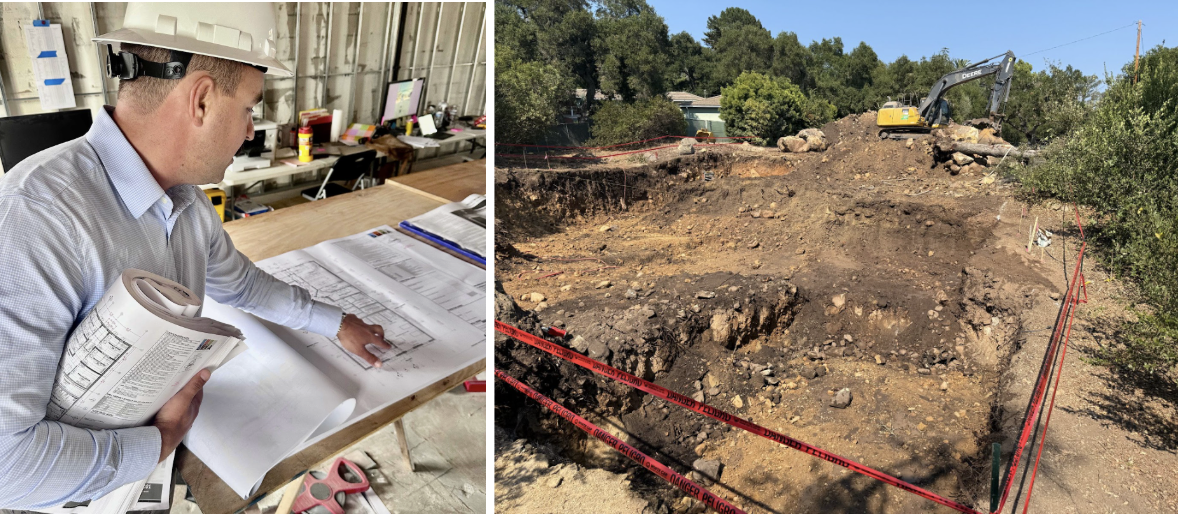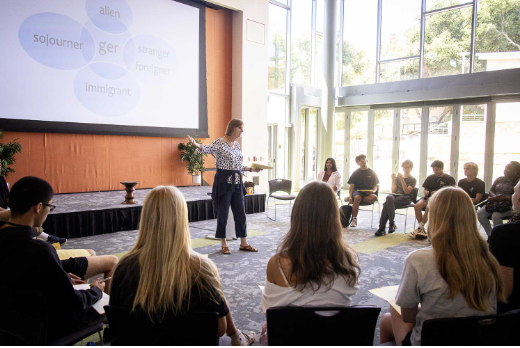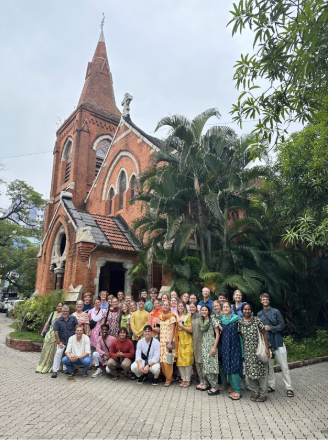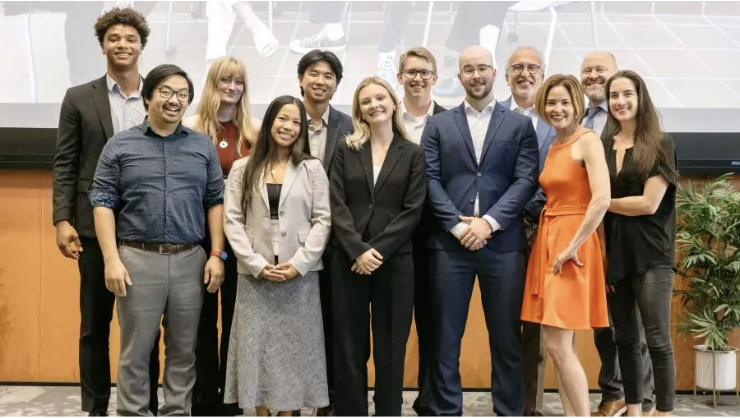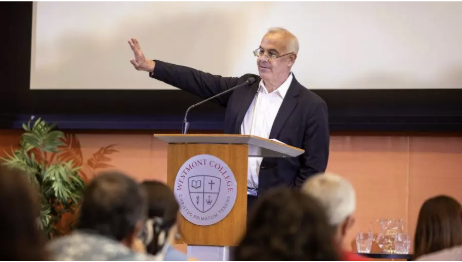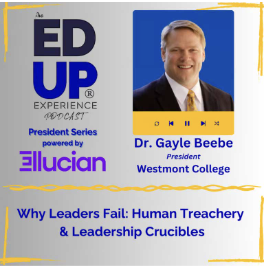GAYLE D. BEEBE, PH.D.
President
As we begin a new academic year, we’re grateful for so much despite strong headwinds that continue to challenge us. Westmont finished financially in the black for the 41st consecutive year despite facing some of the tightest financial margins in our history, an issue across higher education. We raised more than $32 million in all categories of fundraising and advanced some key projects, which I’m excited to share. Another robust year of accomplishment positions us well for this new year. We graduated one of our largest classes in May while continuing to attract a strong new class to fill enrollment on campus.
Orientation
At the end of August, we welcomed 375 new first-year and transfer students at Orientation with great Westmont energy. Another 38 students began the Westmont Downtown | Grotenhuis Nursing program, joining two other cohorts of students enrolled in the accelerated 16-month Bachelor of Science in Nursing program. We continue to buck national trends by enrolling large numbers of male students (43%). Forty-six percent of new students represent multicultural, multinational diversity, with 26 international students, one of our highest totals ever.
Engineering Program
We recently learned that our engineering program has received full accreditation from ABET (Accreditation Board for Engineering and Technology), retroactive to October 2022, a major accomplishment for Director Dan Jensen and the faculty. Only two other Christian colleges in California have earned this full engineering accreditation.
Environmental Studies
We launched a new environmental studies major this fall in response to a growing number of students seeking to engage pressing climate-related issues, explore environmental stewardship through the lens of Christian theology and ethics, and examine the links between social and environmental justice. Since adding an environmental studies minor in 2019, the college has hosted several national climate workshops and launched co-curricular programs on campus such as the Oak Restoration Project in the barranca west of Voskuyl Library.
In fact, you may have heard about the sheep we brought to campus in July to eat nonnative vegetation and reduce wildfire fuel in the area. Montecito Fire coordinated the project with Professor Laura Drake Schultheis, who has worked with ecology students to restore the property to a native oak woodland. The story gained national attention, and you’ll enjoy reading the feature here.
Stu Cleek
Stu Cleek, who has more than 35 years of experience in Christian higher education, has become vice president for student life. He has faithfully served the college for the past 26 years. “I feel genuinely called to this work, and it’s a privilege to help shape the student experience as we pursue our shared mission at one of the nation’s preeminent Christian colleges,” Cleek said. “Doing so alongside trusted colleagues and friends, in a place that feels so much like home, is a true blessing."
New Tenure-Track Professors
We’ve welcomed eight new tenure-track professors this fall: James Davidson (sociology), David Emanuel (religious studies), Kyle Hansen ’19 (mathematics), Sally Hawkins (education), Raymond Kim (economics and business), Smaranda Lawrie (psychology), Nicole Marsh ’17 (biology) and Claudia Molina (Spanish). They’ll make notable contributions inside and outside of class, and we’re delighted to see them fully engaging with the community in their first few weeks here.
Construction at Westmont Downtown | Keith Center and the new Martin Institute Center
Construction crews spent a busy summer working on the Westmont Downtown | Keith Center, the new Martin Institute Center, and the Westmont Track. When completed in December, the Keith Center will house an expanded Grotenhuis Nursing program and other post-secondary programs to meet the community’s growing needs. The Martin Institute complex will also accommodate the Dallas Willard Center and various campus departments when it's completed next spring. After enduring 16 seasons of use, the track got a new surface during a three-week process, preserving it for at least another decade.
